Creating urban greenery in Kenyan schools
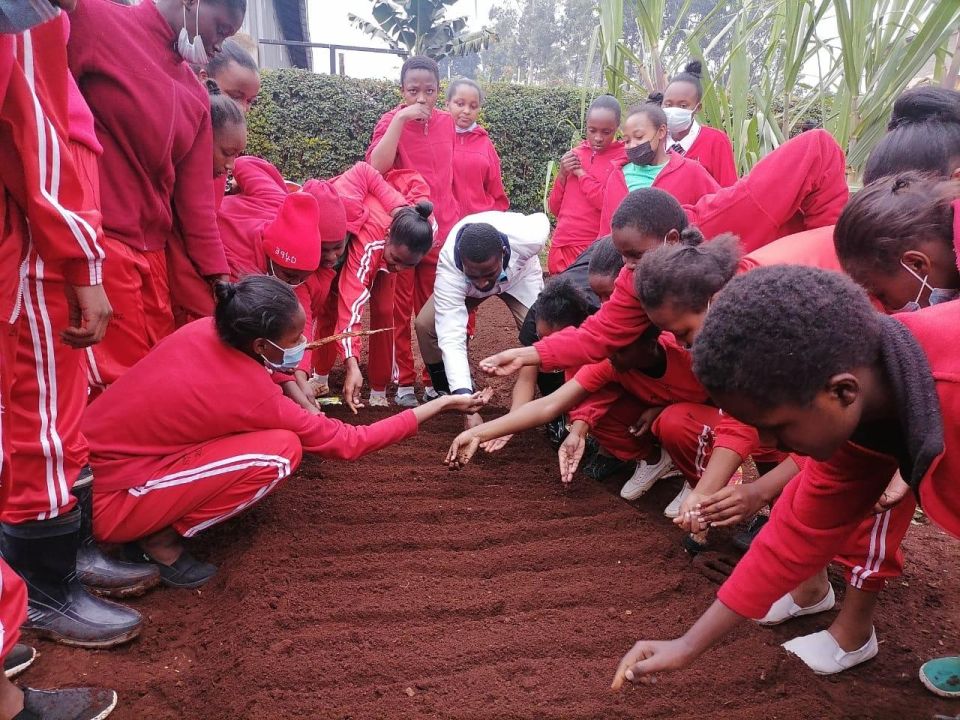
As part our International Programme this year, we are working with local Kenyan non-profit, COSDEP, to create organic fruit and vegetable gardens based on agroforestry principles - a land management approach that combines trees and shrubs with crop and livestock farming systems - in three peri-urban schools in Nairobi’s neighbouring county of Kiambu.
Our International Development Manager, Klaudija Alasauskaite, sat down with Jane Wamathai from COSDEP to find out more about their organisation, challenges in connecting urban Kenyan children with nature and Jane’s thoughts on COP26.
Interview with Jane Wamathai
We'll begin with an easy question of what's your favourite tree and why?
I would go with an avocado tree because it's an agroforestry and also a fruit tree. I went with this because back in my home place where I grew up there was an avocado tree in my homestead. It was only when I grew up and when I went into the agriculture sector that I understood some of the reasons of its importance, economically-wise, environmentally-wise, and also nutritionally-wise. It is a much loved fruit here in Africa. Even the current prices of avocados have gone really high because of the demand. Now you can get one for even 100 shillings (£0.66) in the off season, when it used to be only 5 shilling (£0.03) before. Imagine that! So we are being encouraged to plant it now for these reasons, but previously in my homestead when I was growing up, it was just a tree that we would have because of the nutritious fruits.
During its season and when there were many fruits, my parents would sell the avocados to make an income. On Sundays, we would have gatherings with some of our friends and they would sit under the shade of that tree and never get burnt by the hot sun. So, there are many reasons why we loved that tree!
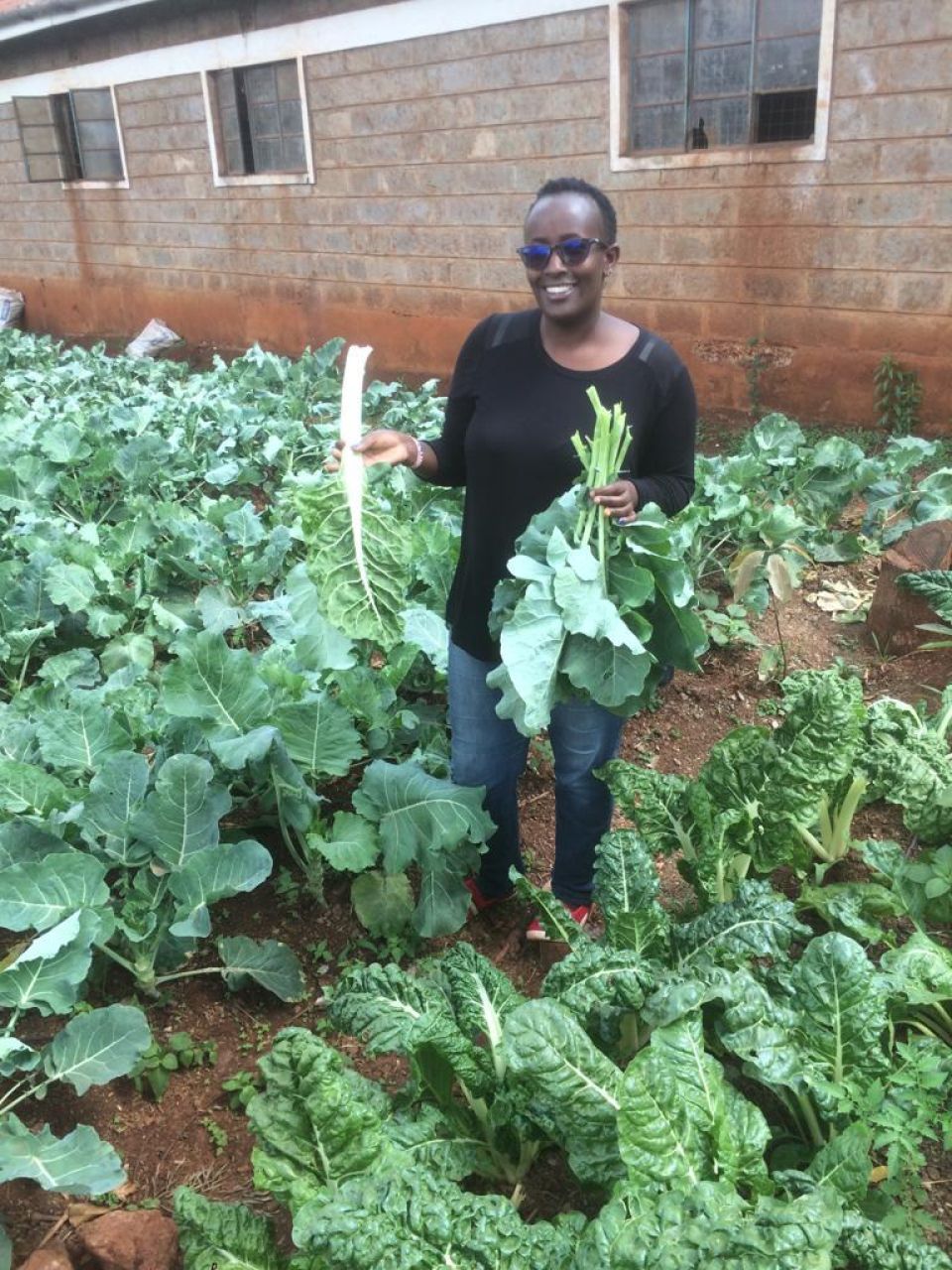
What are the main aims of COSDEP as an environmental organisation?
When we started it was basically about training farmers on organic agriculture. Initially we created awareness about the topics by meeting with community groups, telling them about organic agriculture, its benefits, and for many years that's what we did because many people didn't know about organic agriculture at the time. From there we recruited groups and trained extension officers on the importance of organic agriculture and also about livestock production.
We also started partnering with other organisations that complement our work and over the years our work has revolutionised from just training farmers into doing even marketing of organic produce and so many other things that we are doing currently. All in all, the organisation has grown a lot from where it started way back in 2002 to where it is now.
The world keeps changing and we couldn't keep on just training farmers, so we diversified and brought in other cross cutting issues like training on agroforestry and engaging school children with our organic school gardening projects.
Jane Wamathai from COSDEP
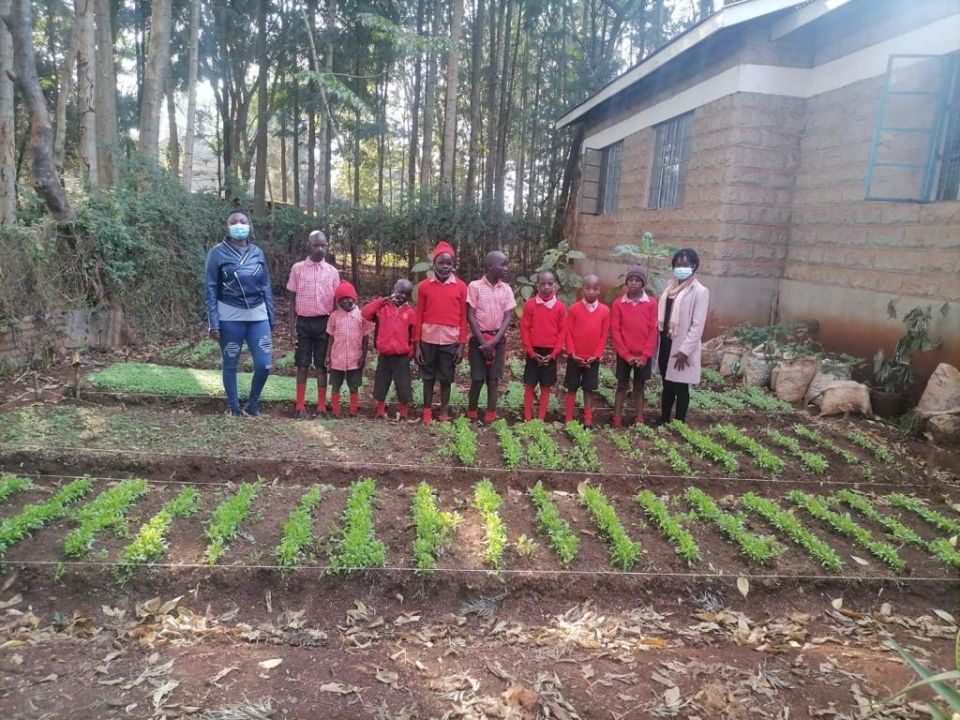
It's the first time that Trees for Cities and COSDEP are working together. Specifically, we're working on the organic school gardening projects. Could you talk a little bit about the difference that you think the projects are making to the children attending these schools?
The project was very well received by the management of the schools and even the children are very excited about the gardens.
We've had them participate very fully in the organic gardening which has given them a new passion. As most of the children that we are targeting live in rental houses, it means having a garden to plough at home is very difficult. So for them to have an opportunity to farm in schools has awakened their passion towards organic growing and they're very excited.
We’ve also noticed the children encouraging these new behaviours at home. For example if their parents do have some growing space, they've learnt that they can improve this and convert it into very beautiful kitchen gardens and have a fresh supply of vegetables at home. The children have taken this knowledge back to their parents. In the coming months, we'll even be able to visit some of the children’s homes and see what they've been able to do after the COSDEP trainings and the activities that they've undertaken in schools.
We went harvesting vegetables last Sunday in one of the schools and the teachers in charge were very excited. They told us that two of the teachers at the school have even started small farms in their own homesteads. So that's something that has been very positive and we appreciate that. We started the school gardens from scratch in two of the schools we’re working in, because the places were full of grass and the other full of rocks. We converted them into very beautiful gardens and it's something that has been very, very inspiring to look at and to see for the children and also for the teachers.
Children have also learnt about nutrition, including different varieties of vegetables, the different fruit trees, and even the different agroforestry trees that they can plant, which they're very excited about.
Jane Wamathai from COSDEP
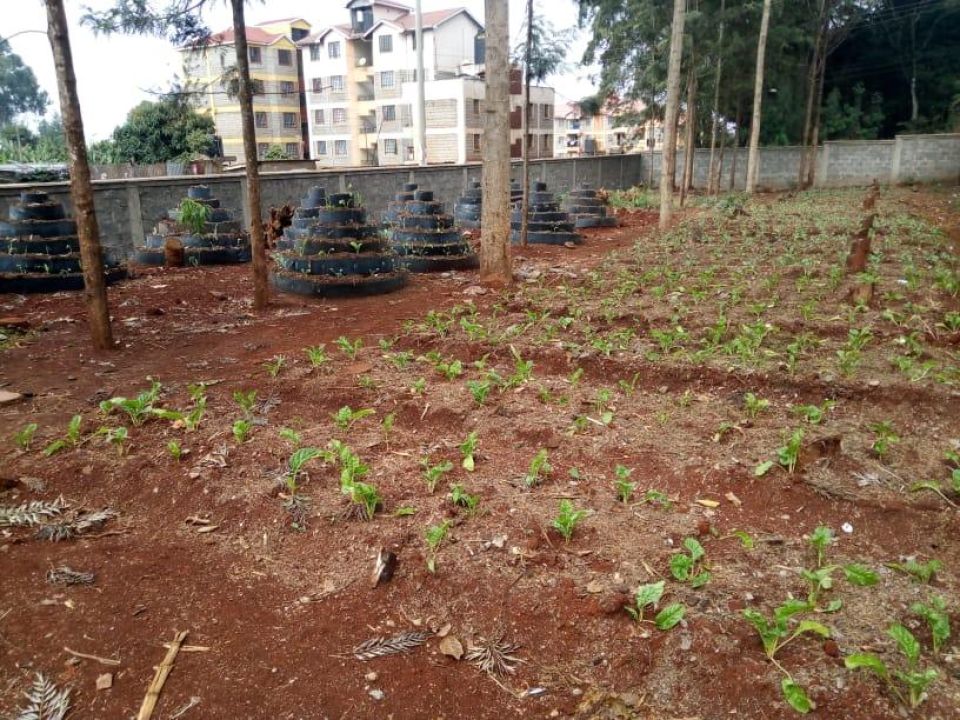
Towns and cities are becoming more and more urbanised and perhaps many children don't have that opportunity to have exposure to nature. Could you talk about that in the context of children growing up in urban environments in Kenya and what sort of opportunities they may have to connect with nature like you did growing up?
The rural areas have more space and also there are fewer children because most people have migrated from the rural areas to urban areas. So, you find that in the urban areas, the schools are usually very congested. There is lack of space in urban schools. We discussed this as a major challenge when we were identifying schools for our partnership project as even in the peri-urban areas, many school grounds do not have the space to implement a gardening project. So, you can imagine how the situation is in schools that are located in urban centres which are very congested and don’t have much space at all.
You also find that most of the children’s schooling in urban areas experience respiratory diseases more often compared to the ones in the rural areas, and this leads to them missing classes more frequently than those in the rural areas. This is something I can attest to, because I have experienced living in the rural areas and also in urban areas. I also have a child who is in school, and once a child gets infected with coughing or any other contagious disease, it spreads to the rest of the pupils very fast.
Getting out of the school grounds to go for nature walks, something that is common in the rural schools, is not possible in the cities. If a school is just in the middle of a town, when you get out of the gate the first thing you see is traffic all around. That is something that we can attest to within Nairobi and also within the area directly in some of the schools that we're working in.
The children don't have enough of an opportunity to have a little walk in nature, meaning getting know trees and their environment is very hard unless they get taught that in the classroom.
Jane Wamathai from COSDEP
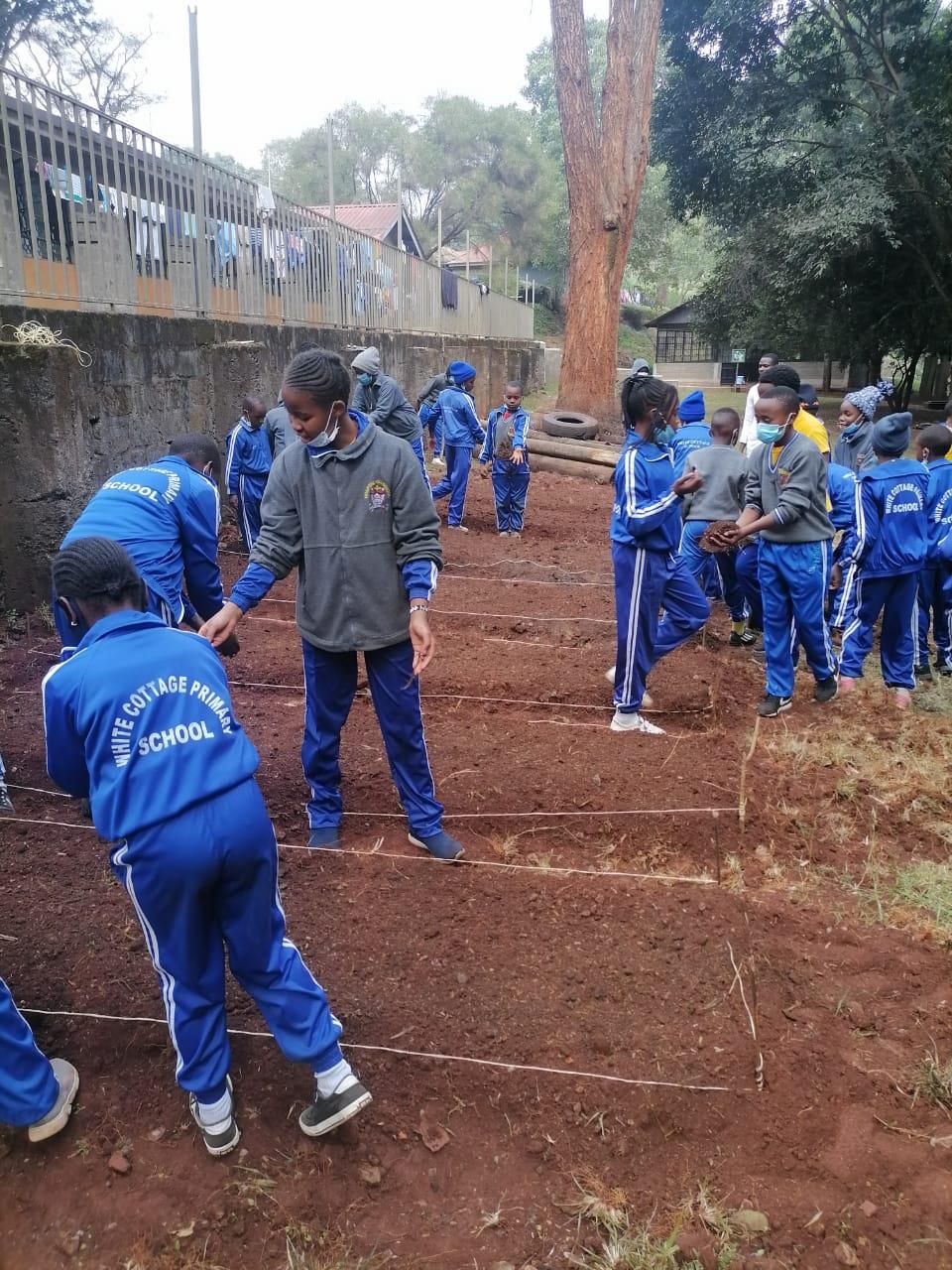
In terms of having access to nature within urban areas, would you say there is a growing movement to get more green spaces within towns and cities in Kenya for the benefit of younger generations as well as urban dwellers more generally?
What we have seen coming up nowadays is pressure from people for more spaces right in Nairobi. For example, we have Uhuru Park and Arboretum - these are spaces that have been set aside where people can go and have nature walks, people can go and sit down to connect and have social gatherings. Unfortunately there are not so many of them.
Another recent example is Michuki Park which is just a small space that was recently rehabilitated and launched by President Uhuru Kenyatta within Nairobi. It has a river and spaces where people can go and relax. John Michuki is a former environmental minister in Kenya who was very passionate about reclaiming forests and rivers. So that is one of the spaces in Nairobi that he was able to reclaim. It was fenced off by the county government of Nairobi and they have designated spaces for people to use for meeting friends for leisure - it is free to get in.
So, we have several of them that are coming up, because I think we have more people who are pushing for this. Like where we are in Kiambu County, we have places within schools that have big playgrounds. Community members are allowed to go there and the youths can play football. They are also allowed to relax there and even socialise in the evenings and during weekends.
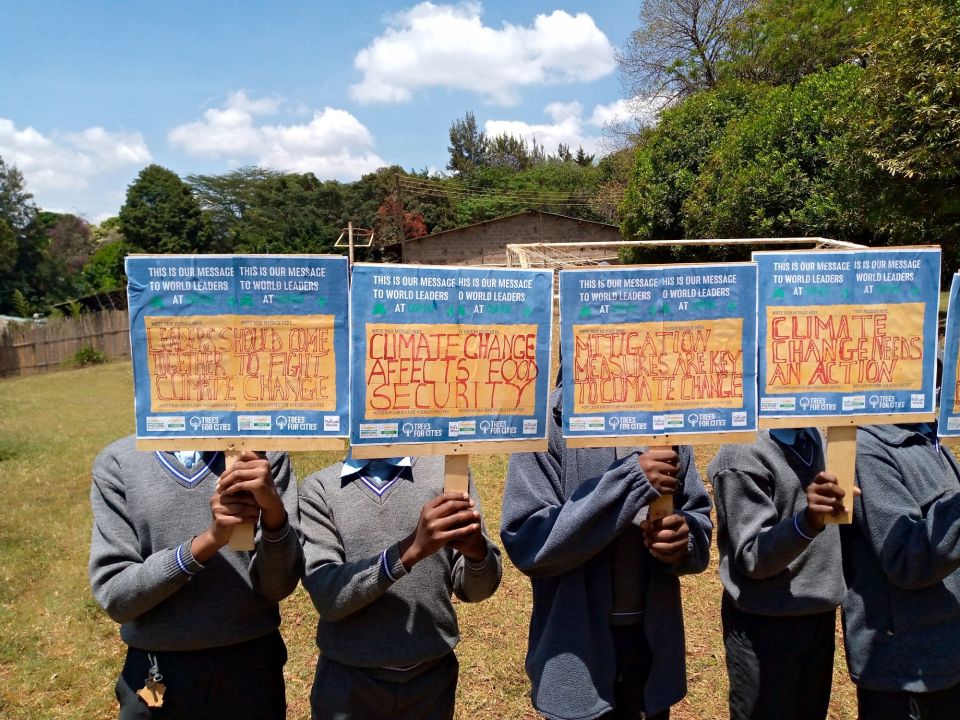
As you know, COP26, which is taking place in Glasgow is just around the corner. Do you think that children and young people, especially ones from the global south will be able to get their message across to world leaders at COP26?
I was discussing this with my colleague and I said that this is very possible if only they could be given the opportunity and the space. But I’m not so sure - as then I was asking myself whether many of the children or the schools even have the information about the summit because actually, that's where it starts. For us at COSDEP, I think we have the information because we are currently working with Trees for Cities. I wonder if we were not having this project together, would we be having the information about the conference to begin with.
Many of the meetings that the world leaders have held, the changes and messages that they put forward, do not reach the grassroots communities. In the conference, we hope they come up with more effective and reliable ways on how we could mitigate climate change through targeting grassroots communities, and providing them with resources that they will need to adapt to climate change.
Some of the results from these very high-profile meetings do not get to the grassroots communities and they really are the ones that are greatly affected by climate change. So our wish is that they will target every resource they have and channel it to the grassroots communities.
A huge thanks to Jane for taking part in this interesting discussion. We would also like to thank our generous funders for making this year's International Programme possible, The Lund Trust, a charitable fund of Lisbet Rausing and Peter Baldwin, and Savills Investment Management.


Donate to Trees for Cities and together we can help cities grow into greener, cleaner and healthier places for people to live and work worldwide.
Donate